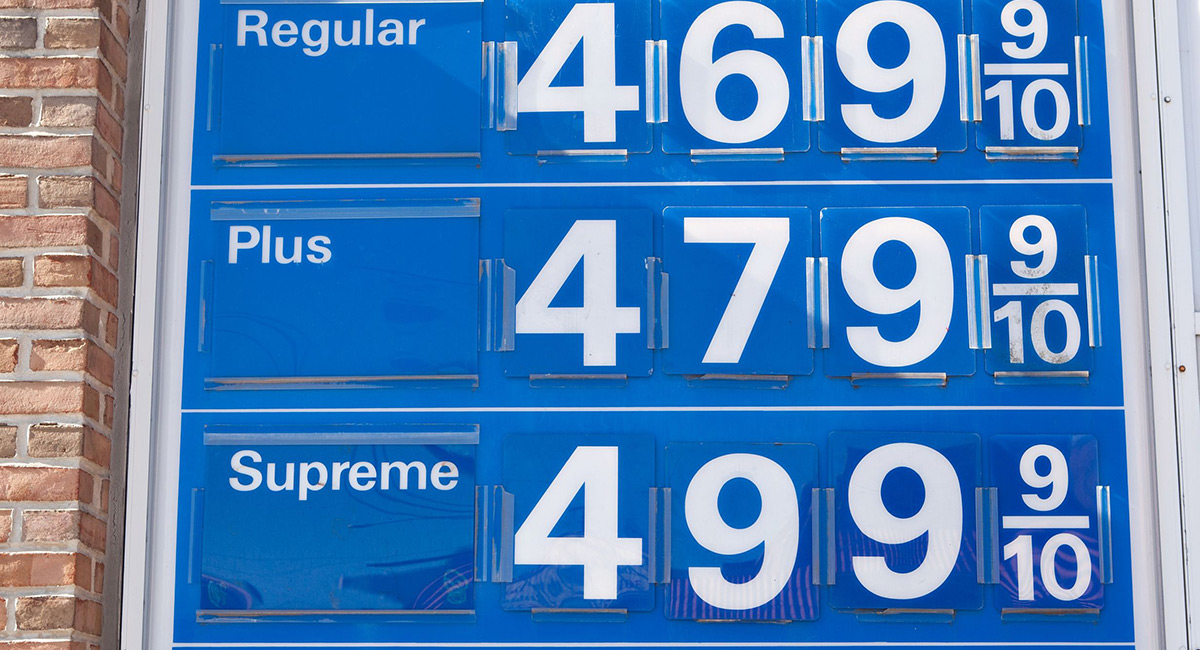Shortly after the United Nations Intergovernmental Panel on Climate Change released its latest apocalyptic report, the Biden administration sent a formal request to OPEC, the Organization of Petroleum Exporting Countries, asking the cartel’s members to expand oil production to help control fuel prices.
The OPEC appeal makes it clear that President Biden wants to have it both ways. He wants to be seen as a card-carrying “green,” a champion of clean energy. But he also realizes that the green policies he’s pushing, given current technologies, will drive up the cost of energy and punish consumers, a political liability for the administration and his party. With the price of regular gasoline now averaging more than three dollars a gallon nationwide, the political danger is very real.
Crude oil prices (now hovering around $70 per barrel) have been pushing up prices at the pump since the post-Covid economic recovery began. The upward pricing pressure was reinforced by the administration’s early decision to cancel the Keystone XL pipeline, which would have carried oil from the Bakken Shale deposits in Canada and the Dakotas to Gulf Coast refineries. Ironically (or not), while canceling Keystone XL, the president gave a nod of approval to a similar pipeline, Nord Stream 2, to carry natural gas from Russia to Germany.
Canceling Keystone XL wasn’t the president’s only concession to the greens. The administration also canceled leases for oil production in Alaska, suspended oil leasing on federal lands (despite a federal court ruling that the moratorium is illegal), proposed higher fuel-economy standards for cars, and invoked the Endangered Species Act to limit or stop drilling on private land in the West.
It doesn’t take a Ph.D. economist to predict that such actions will limit energy supplies and drive prices up. No one should excuse the results as “unintended.”
The administration and its congressional allies likewise want to pass a Clean Electricity Standard that would shift the country to 80 percent emissions-free power by 2030 and 100 percent clean energy for homes and offices by 2035. The likely consequences are also predictable because the proposed pivot to government-mandated renewable power is happening when the existing electric grid’s reliability is declining.
Blackouts already have become a persistent threat in California and Texas. The Western Electricity Coordinating Council, which oversees grid operations in the western half of the country, has warned that there may not be enough reserve power to keep lights and air conditioners on if a persistent heat wave stretches across multiple states and sends electricity demand soaring. In fact, rolling blackouts could be the only option for keeping the Western grid from collapsing.
Integrating renewable power into the electric grid is extremely challenging. California is a case in point. Abundant solar power during daytime hours is followed by declining power supplies as the sun sets, even as temperatures and electricity use remain high. Ensuring sufficient backup power to maintain reliability all day every day is proving to be a nail-biting experience for grid operators. As one California legislator remarked after rolling blackouts last summer, “Today we have a grid that is increasingly expensive, unreliable and unavailable when the people of California need it the most.” Texas last winter proved that grid reliability can be a problem during unusual cold snaps as well.
What is particularly troubling about the problems in California is that green advocates hold the Golden State up as a model for the entire country. California was supposed to be charting a path forward for the rest of us. If anything, it’s charting the course not to follow.
Increased generation of clean electricity makes sense when it can be done cost-effectively without government subsidies. But it shouldn’t be pushed without having a comprehensive energy policy in place to protect consumers against grid failures, blackouts, and wild price spikes.
The administration’s war on U.S. fossil fuel production and distribution, especially cheap, abundant, clean-burning natural gas, shows that no such policy exists. By encouraging OPEC and Russia to boost oil and gas production, the administration seems to acknowledge the continued importance of fossil fuels—but only, apparently, if we’re dependent on imports to meet our needs.
Until we have the technology to store massive amounts of renewable energy and to move massive amounts of excess power from one region of the country to another, the responsible approach to the energy transition is not to treat our existing resources as a problem, but as the foundation on which to build renewable power.











